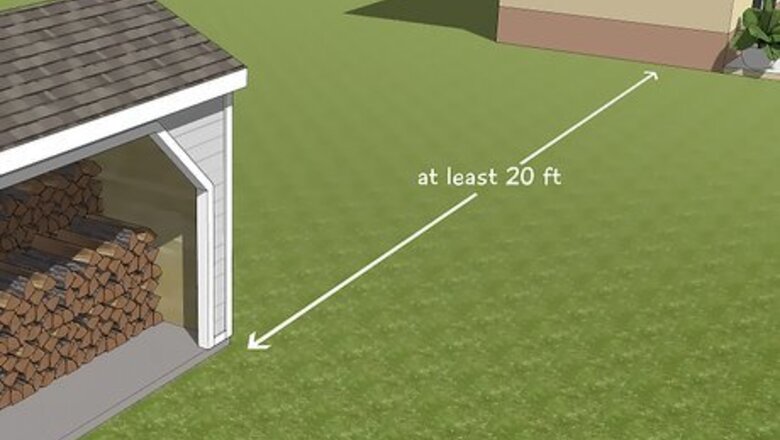
views
- Stack firewood on a tarp or rack in a sunny, well ventilated area, at least 20 feet (6.1 m) from your house. Put something under the firewood to keep it off the ground.
- Lay the wood all going the same direction in rows, bark side up. Leave small gaps between each piece of wood to prevent trapping moisture.
- Secure a tarp over the top ¼ of the pile or stack the wood under a roof to keep it out of rain and snow.
Stacking Firewood Properly
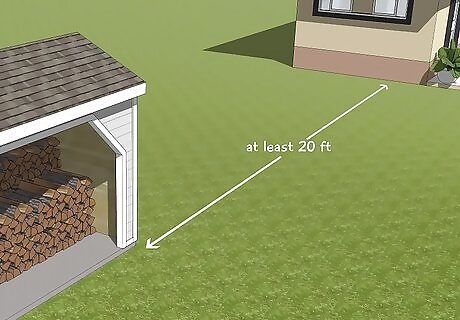
Stack wood in an open, well draining area far away from your house. Stack your wood in an area that is at least 20 feet (6.1 m) away from your house, open to the sun, and at least a few feet from any other structure. This helps prevent attracting bugs and rodents. Keep the pile away from forested areas to prevent pest infestation and to allow the sunlight to hit it. If the location is somewhat far away from where you'll be burning, you may want to use a wheelbarrow or wood carrier to help transport it.
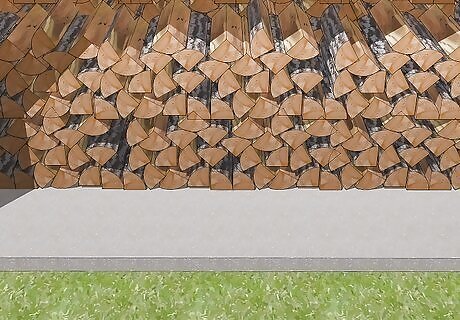
Stack the wood on a tarp, cement foundation, or wooden pallet. Wood decays more quickly (and picks up bugs and fungus!) when it’s directly on the ground. The best way to store wood is on a raised cement foundation or metal rack, but you can also put it on a vapor barrier, patio tiles, or wooden pallet. You can also layer clean gravel between your wood and the dirt. Stack the wood on something fully lifted off of the ground, like a rack, to get the best circulation.
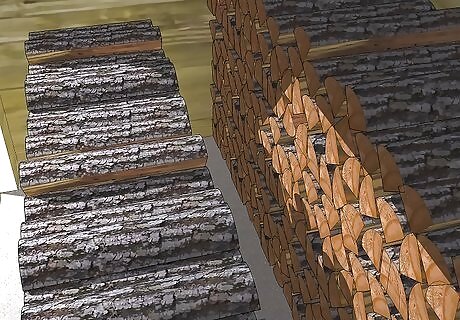
Stack firewood on racks or between posts or cinder blocks. If you don’t have a rack, metal T-posts, stacked cinder blocks, and similar stationary objects can be used to support the ends of your woodpile. Leave room for air circulation between the sides and the wood to help it dry out. You can also stack wood at the end of your pile to bookend it. Alternate rows of logs laid perpendicular on top of each other until the stacks are as high as the pile. Do this on a ground covering or pallet so the logs don't directly touch the ground. Bookends prevent wood from rolling down the sides and becoming a tripping hazard.
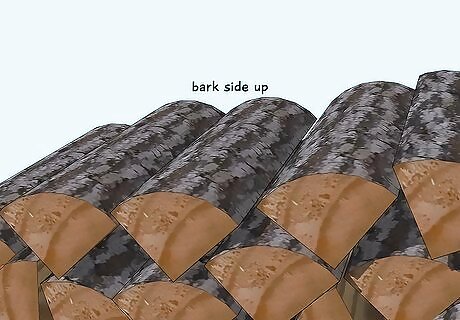
Place the wood bark side up, all in one direction. Start with your freshest wood and lay it down evenly spaced and bark side up. Don’t pack it tightly so air can reach the wood. Keep piling up the wood until the stack is, at maximum, 5 feet (1.5 m) high. Stacking the wood bark side up prevents rain water from soaking into the wood. Some areas have different regulations on how high firewood can be stacked. Look up the information for your region online or visit your local fire station. If you aren’t using a rack, piles over 4 feet (1.2 m) can be unstable.
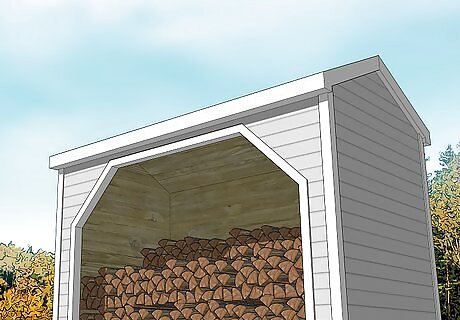
Cover your wood with a roof or a tarp. While green (fresh) wood needs sunlight to dry, having a structure to keep your firewood out of the elements prevents it from getting wet again. The easiest way is to cover the top ¼ of the pile with a tarp in snowy and rainy seasons, and then remove it when it’s sunny again. Leave the sides of the wood uncovered to avoid locking in moisture. Some log racks that you can buy come with roofs, as well.
Firewood Safety & Pest Prevention

Only burn dry, mold and fungus-free wood. Burning moldy wood can release spores into the air that cause sneezing, coughing, rashes, and asthma attacks. These symptoms can be even more severe for people with mold allergies. If there isn’t a lot of mold, salvage the wood by removing it from the pile and leaving it to dry in direct sunlight. If the mold doesn’t become crusty and fall off, dispose of the log by composting it or bringing it to a dump.
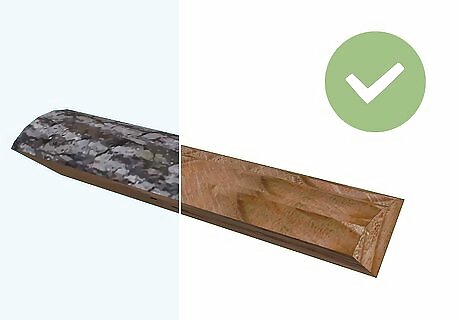
Prevent insect infestations by removing the bark. If you split the wood yourself, consider removing the bark, which is where many bugs like to live. Never bring infested wood inside—while many species of wood boring beetles won’t attack finished wood, logs can also carry ants and termites.

Avoid burning treated wood to prevent injury and harm. Smoke from pressure treated wood can cause permanent lung damage when it’s inhaled. Although it can be tempting to burn scraps from construction projects, only burn untreated wood. Don’t burn painted or laminated wood, either. Treated wood is most commonly used for decks, railings, trim, and other outdoor structures. Generally, treated wood has a greenish tinge to it. However, over time this color may have faded or otherwise changed. When in doubt, throw away potentially treated wood.

















Comments
0 comment